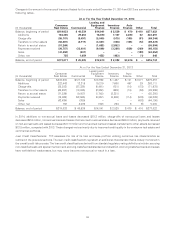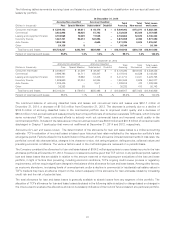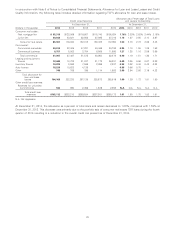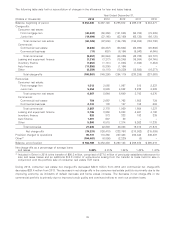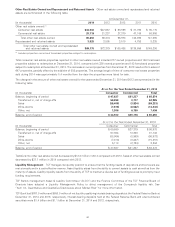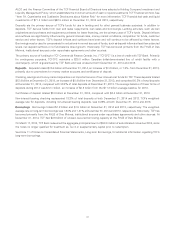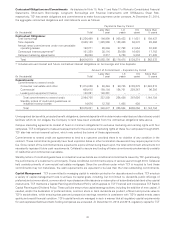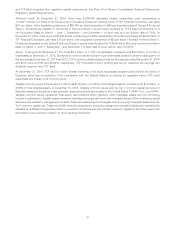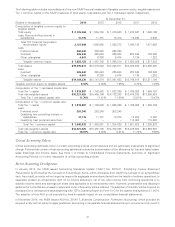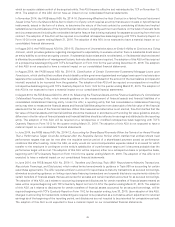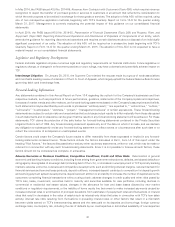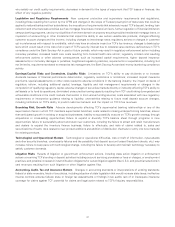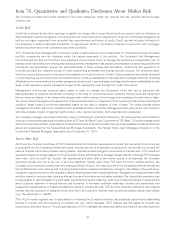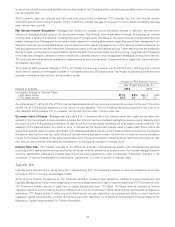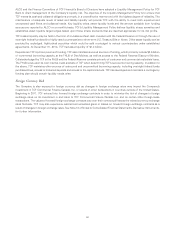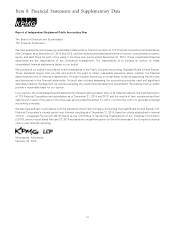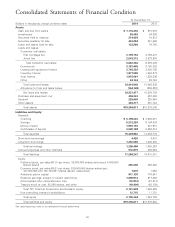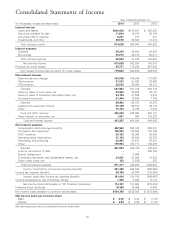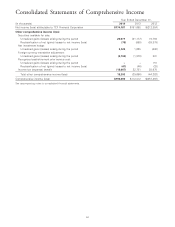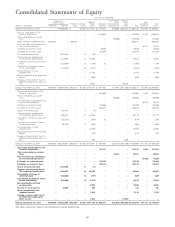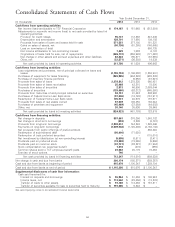TCF Bank 2014 Annual Report Download - page 59
Download and view the complete annual report
Please find page 59 of the 2014 TCF Bank annual report below. You can navigate through the pages in the report by either clicking on the pages listed below, or by using the keyword search tool below to find specific information within the annual report.In May 2014, the FASB issued ASU No. 2014-09, Revenue from Contracts with Customers (Topic 606), which requires revenue
recognition to depict the transfer of promised goods or services to customers in an amount that reflects the consideration to
which the entity expects to be entitled in exchange for those goods or services. The adoption of this ASU will be required, using
one of two retrospective application methods, beginning with TCF’s Quarterly Report on Form 10-Q for the quarter ending
March 31, 2017. Management is currently evaluating the potential impact of this guidance on our consolidated financial
statements.
In April 2014, the FASB issued ASU No. 2014-08, Presentation of Financial Statements (Topic 205) and Property, Plant, and
Equipment (Topic 360): Reporting Discontinued Operations and Disclosures of Disposals of Components of an Entity, which
amends the guidance for reporting discontinued operations and requires certain disclosures about a disposal of an individually
significant component of an entity. The adoption of this ASU will be required on a prospective basis beginning with TCF’s
Quarterly Report on Form 10-Q for the quarter ending March 31, 2015. The adoption of this ASU is not expected to have a
material impact on our consolidated financial statements.
Legislative and Regulatory Developments
Federal and state legislation impose numerous legal and regulatory requirements on financial institutions. Future legislative or
regulatory change, or changes in enforcement practices or court rulings, may have a dramatic and potentially adverse impact on
TCF.
Interchange Litigation On January 20, 2015, the Supreme Court denied the request made by a group of trade associations
and merchants seeking review of a decision of the U.S. Court of Appeals, which largely upheld the Federal Reserve Board’s rules
governing debit card interchange fees.
Forward-Looking Information
Any statements contained in this Annual Report on Form 10-K regarding the outlook for the Company’s businesses and their
respective markets, such as projections of future performance, guidance, statements of the Company’s plans and objectives,
forecasts of market trends and other matters, are forward-looking statements based on the Company’s assumptions and beliefs.
Such statements may be identified by such words or phrases as ‘‘will likely result,’’ ‘‘are expected to,’’ ‘‘will continue,’’ ‘‘outlook,’’
‘‘will benefit,’’ ‘‘is anticipated,’’ ‘‘estimate,’’ ‘‘project,’’ ‘‘management believes’’ or similar expressions. These forward-looking
statements are subject to certain risks and uncertainties that could cause actual results to differ materially from those discussed
in such statements and no assurance can be given that the results in any forward-looking statement will be achieved. For these
statements, TCF claims the protection of the safe harbor for forward-looking statements contained in the Private Securities
Litigation Reform Act of 1995. Any forward-looking statement speaks only as of the date on which it is made, and we disclaim
any obligation to subsequently revise any forward-looking statement to reflect events or circumstances after such date or to
reflect the occurrence of anticipated or unanticipated events.
Certain factors could cause the Company’s future results to differ materially from those expressed or implied in any forward-
looking statements contained herein. These factors include the factors discussed in Part I, Item 1A of this report under the
heading ‘‘Risk Factors,’’ the factors discussed below and any other cautionary statements, written or oral, which may be made or
referred to in connection with any such forward-looking statements. Since it is not possible to foresee all such factors, these
factors should not be considered as complete or exhaustive.
Adverse Economic or Business Conditions; Competitive Conditions; Credit and Other Risks Deterioration in general
economic and banking industry conditions, including those arising from government shutdowns, defaults, anticipated defaults or
rating agency downgrades of sovereign debt (including debt of the U.S.), or increases in unemployment in TCF’s primary banking
markets; adverse economic, business and competitive developments such as shrinking interest margins, reduced demand for
financial services and loan and lease products, deposit outflows, increased deposit costs due to competition for deposit growth
and evolving payment system developments, deposit account attrition or an inability to increase the number of deposit accounts;
customers completing financial transactions without using a bank; adverse changes in credit quality and other risks posed by
TCF’s loan, lease, investment, securities held to maturity and securities available for sale portfolios, including declines in
commercial or residential real estate values, changes in the allowance for loan and lease losses dictated by new market
conditions or regulatory requirements, or the inability of home equity line borrowers to make increased payments caused by
increased interest rates or amortization of principal; deviations from estimates of prepayment rates and fluctuations in interest
rates that result in decreases in the value of assets such as interest-only strips that arise in connection with TCF’s loan sales
activity; interest rate risks resulting from fluctuations in prevailing interest rates or other factors that result in a mismatch
between yields earned on TCF’s interest-earning assets and the rates paid on its deposits and borrowings; foreign currency
exchange risks; counterparty risk, including the risk of defaults by our counterparties or diminished availability of counterparties
46


